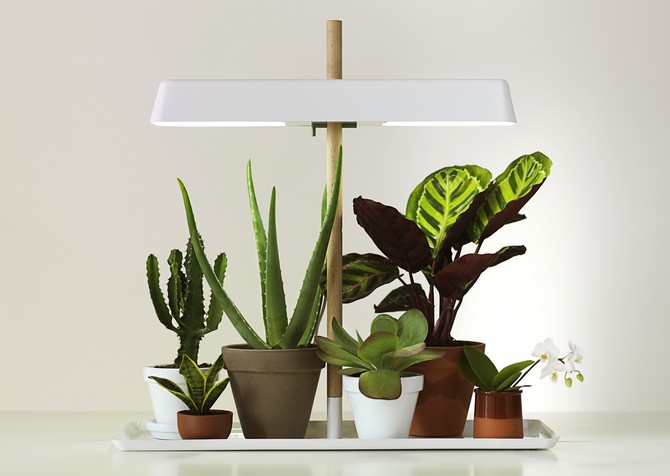It is difficult to overestimate the importance of lighting for indoor plants, however, as well as for any other. Although it would be more correct to talk about light for them. After all, lighting can be provided by artificial means, for example, using phytolamps, LEDs and other devices. The light from special lamps, if they are, of course, correctly applied, will be quite enough for the plant to develop and please the eye. But even ordinary lighting devices, such as a floor lamp, sconce or table lamp, if the plant is well positioned, may well be an additional source of illumination. This is especially true in dark places of the room or in winter..
Knowing how the plant relates to light, you can choose a place for the plant where it can feel the most natural and develop well. Consider the meaning of light for the most common indoor plants.
- Shade-loving plants. These include: aglaonema, aspidistra, gelksin, sansevieria, which is also called the pike’s tail or mother-in-law’s tongue. Of course, there are not very many plants that love shade. But the meaning of shade-loving does not mean that they must be placed in the farthest corner of the room. These plants develop well in lighter places – in partial shade..
- In addition to them, they feel great in partial shade: dracaena bordered or fragrant, fern, ivy, scindaptus, tolmia, fatshidera, fatsia, dwarf ficus, philodendron, fittonia.
- Plants such as azalea, anthurium, asparagus, begonia, bromeliads, and grapes adore diffused sunlight. Positively in bright light, but without direct rays of Dieffenbachia, Zygocactus, Columney, Oxalis, Monstera, Peperomia, Lily, Ivy, Spathiphyllum, Scindapsus, Philodendron, Fuchsia, Chlorophytum, Cyclamen. For many plants that have ornamental leaves or are flowering, this is the best light. A windowsill will be preferred for these plants. But it should be borne in mind that every 0.5 meters from the light source reduces its intensity by half..
- The sun on the windowsill is suitable for agapandus, acacia, bougainvillea, bouvardia, liliathropus, hibiscus, jasmine, zebrin, cacti, succulents, callistemon, coleus, citrus fruits, oleander, passionflower, geraniums, roses, epiphyllum. Although these plants love the sun, it is better to avoid direct sunlight and shade..
- Bright sun, but, again, in small doses, it will not harm whiteperone, gynure, gloxinia, zebrina, capsicum, codiaum, apical cordilina, kufei, touchy, poinsettia, sansevieria, saintpaulia, tradescantia, rubber-bearing ficus, chlorophytum, chlorophytum.
Of course, there are many more plants that prefer certain conditions. But here are the plants that are most often found in our apartments or that flower growers prefer to breed. And it should be understood that lighting for a plant is as necessary as watering and air..

